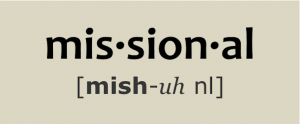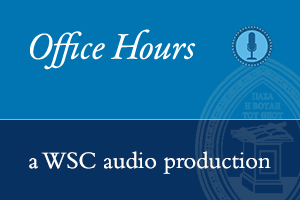One reason no one wants to talk about the comity agreement is that it is not always observed. One suspects that few church planters or pastors even know that there is a comity agreement that is supposed to be informing our church . . . Continue reading →
Missional and Reformed
The Church Has A Twofold Mission And Three Marks And Ending Payday Lenders Is None Of Them
Just before our Lord Jesus ascended to the right hand of the Father, he gave the visible, institutional church as twofold mission: “All authority in heaven and on earth has been given to me. Go therefore and make disciples of all nations, . . . Continue reading →
Interested In A URCNA Church Plant In The Eastern USA?
Contact info. NB: A Classis is a regional assembly of Reformed churches. It is a Latin word that originally referred to a fleet of ships. The Presbyterians say essentially the same thing with the word Presbytery Resources How To Subscribe To Heidelmedia . . . Continue reading →
Thinking Of Planting A Confessional Reformed Church On The Plains?
It is not easy to plant a confessional Reformed congregation on the American Plains (the area of the USA from the between the Rockies and the Mississippi River, from Canada to Mexico). In some places it is sparsely populated. The confessional Presbyterian . . . Continue reading →
Some Reasons Why Visitors Do Not Stay And What To Do About It
Presbyterian and Reformed congregations occupy an odd space in American Christianity. We do not really belong to American Christianity in significant ways. Our roots are not in the nineteenth-century revivals nor even in the eighteenth-century revivals. We are no part of the . . . Continue reading →
Two Big Events In The Life Of A New Confessional Reformed Congregation
In Matthew 28:18–20 our Lord gave a mission to the visible, institutional church: preach the gospel, administer the sacraments, and make disciples. He did not give that mission to a million evangelical para-church organizations. He gave it to the visible church. The . . . Continue reading →
Indy Reformed: Why Creeds And Confessions?
Why do Christians have creeds (e.g., the Apostles’ Creed, the Nicene Creed) and confessions (e.g., the Belgic Confession)? Does having a creed or confession push the Scriptures to one side? Is it really possible to be creed-less? Chris Smith, of Indy Reformed, answers these questions. Continue reading →
Why Communism Is Not The Answer
More Information
Office Hours: Sola Scriptura And Missions
In Matthew 28 our Lord gave to his visible church the great commission to go announce the gospel, to make disciples of all the nations, to plant churches, and to make use of the means that he himself had established. Dr Lloyd . . . Continue reading →
Why The Mission Needs The Marks
Doubtless the one of the most significant movements within evangelicalism at the moment is the “emergent” or “emerging churches” movement. The adjectives “emerging” and “emergent” designate different wings of the movement. Generally, the “emergent” wing is more radical and the “emerging” wing a little less radical. Just as frequently, however, in the contemporary rhetoric from both wings of the movement no distinction is made and this essay will speak of the “emerging movement” (hereafter, EM). Like their older evangelical brothers and sisters, the EM also rejects (at least elements of) fundamentalism and revivalism. In their place, they are constructing a cross-traditional, eclectic synthesis. Continue reading →
Where Are They Now? Fikret Bocek And The Reformed Mission To Smyrna
Long-time listeners to Office Hours will know the name Fikret Bocek. I interviewed him back in 2010. Here we are nine years later, and Fikret is still with us. That is no small thing, as you will hear. He is a 1998 . . . Continue reading →
Why Should We Plant Reformed Churches?
As true churches of Jesus Christ, the URCNA are obligated to fulfill our Lord’s Great Commission to make disciples: “All authority in heaven and on earth has been given to me. Go therefore and make disciples of all nations, baptizing them in . . . Continue reading →
The Earliest Christians Had A Rural Mission Too
To be clear, Robinson’s point is not that early Christians prioritized rural over urban. Rather his point is that the rural dimension of early Christianity has been routinely overlooked due to a reigning paradigm that has insisted Christians were predominantly urban. In . . . Continue reading →
With The Presbycast On The Lost Sheep
The USA is a vast place and there are relatively few confession Presbyterian and Reformed Congregations. You can find many of them listed via NAPARC. Regularly confessional ministers get the question: what do I do when there is not a confessional P . . . Continue reading →
Office Hours: David Zadok On Reaching Israelis With The Gospel
In Romans chapters 9–11 the Apostle Paul addresses the difficult question of whether the Lord has abandoned his promises to the Jews. Paul concludes that God has not abandoned his promises. He appeals to himself as an example, even though he was . . . Continue reading →
Meet Phil Baiden: A Confessional Presbyterian Pastor In The UK
The HB tends to focus on advancing the Reformation among the Reformed and Presbyterian churches in North America but we know that it is happening elsewhere. One example of the recovery of the Reformed theology, piety, and practice is the Rev. Mr. Phil Baiden, pastor . . . Continue reading →
What Is The Church’s Big Mac?
The end of the semester is followed by the holidays so I just saw this post (HT: Aquila Report) discussing the declining fortunes of McDonalds restaurantsamong Millennials and comparing them to the church. The author notes “More people are wanting a customized, . . . Continue reading →
The Multi-Ethnic Implications Of The Gospel
The multi-ethnic implications of the gospel should compel every church planter and church member to critically analyze their practice to see if they are putting up unnecessary barriers to diversity. Every Christian should desire congregations that closely resemble the diversity present in . . . Continue reading →
Setting Priorities For The Congregation
August is the time of year when the heat of summer is accompanied by a blessedly slower pace, unless one is a college football player, in which two-a-day practices begin. Nebraska football is a month away! It’s vacation season for many (e.g., . . . Continue reading →
Office Hours: Reaching A Spanish-Speaking Population
The United States has experienced several great waves of immigration in the 18th, 19th, and 20th centuries. At this writing the United States is experiencing another such wave, this time of Spanish-speaking immigrants. This language-cultural group is noticeably under represented in confessional . . . Continue reading →













